CALL NOW (916)928-6000
Support | My Account | RMA | Blog
CALL NOW (916)928-6000
Support | My Account | RMA | Blog
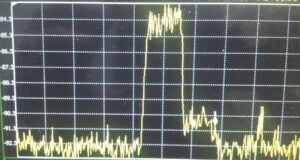 6 GHz microwave radio operators face an ominous challenge of protecting their networks ahead of Wi-Fi 6E deployments. Wi-Fi 6E is the latest 802.11ax standard allowing wireless devices to operate in the 5950 MHz to 7125 MHz bands. 5925 MHz to 7125 MHz has been the go-to long haul band critical infrastructure and service providers have used for decades to backhaul their networks. Wi-Fi 6E users are secondary operators and the FCC has implemented a variety of rules to keep interference “below detectable levels”. While great on paper, the true impact on existing 6 GHz microwave systems will not be known until after Wi-Fi 6E deployments. It is recommended that operators in the 5925 MHz to 7125 MHz bands ready themselves to detect and mitigate any interference.
6 GHz microwave radio operators face an ominous challenge of protecting their networks ahead of Wi-Fi 6E deployments. Wi-Fi 6E is the latest 802.11ax standard allowing wireless devices to operate in the 5950 MHz to 7125 MHz bands. 5925 MHz to 7125 MHz has been the go-to long haul band critical infrastructure and service providers have used for decades to backhaul their networks. Wi-Fi 6E users are secondary operators and the FCC has implemented a variety of rules to keep interference “below detectable levels”. While great on paper, the true impact on existing 6 GHz microwave systems will not be known until after Wi-Fi 6E deployments. It is recommended that operators in the 5925 MHz to 7125 MHz bands ready themselves to detect and mitigate any interference.
Baseline your system… A good baseline establishes expected network performance and enables quick troubleshooting of problems that may arise. Many methods can be used to baseline microwave radio systems such as bit error rate tests, spectrum analyzers, and monitoring programs. Using these tools on a routine basis will assist in detecting possible interference created by Wi-Fi 6E systems in your area.
Ensuring that your radio system is operating within FCC license specifications and up to date is crucial. Wi-Fi 6E systems use the FCC Universal Licensing System database to select operating frequencies so there is not interference to licensed systems. Incorrect information in the FCC database could lead to harmful interference. Existing licensed 6 GHz radio systems can also suffer from incorrect antennas, improper antennas heights, and incorrect polarities. These issues can go undetected for numerous reasons such as poor workmanship, lost institutional knowledge, and improper documentation. FCC license and hardware discrepancies can be very hard to troubleshoot in the field and can lead to interference by Wi-Fi 6E systems. Reviewing your FCC license data and physical installations are more important now than ever for proper system performance.
These ideas seem to be a daunting and time-consuming task, but necessary for the future health of your 6 GHz microwave system. FCC ULS has “noise” or errors in the database that I and others have found when doing license searches. We know the errors are there! The methods mentioned above will help you evaluate, detect, and protect your network. If you do end up experiencing any suspected interference or adverse network performance, you can look to Infiniti Wireless for help troubleshooting and resolving these issues. Additionally, we can offer network baseline measurements, training in doing baseline measurements, ULS scrubbing, and tutorials on how to detect interference caused degradation. We have engineers, technicians, and resources to assist with reviewing and advising on potential interference.
Please contact us today to learn more about Wi-Fi 6E and or interference mitigation.
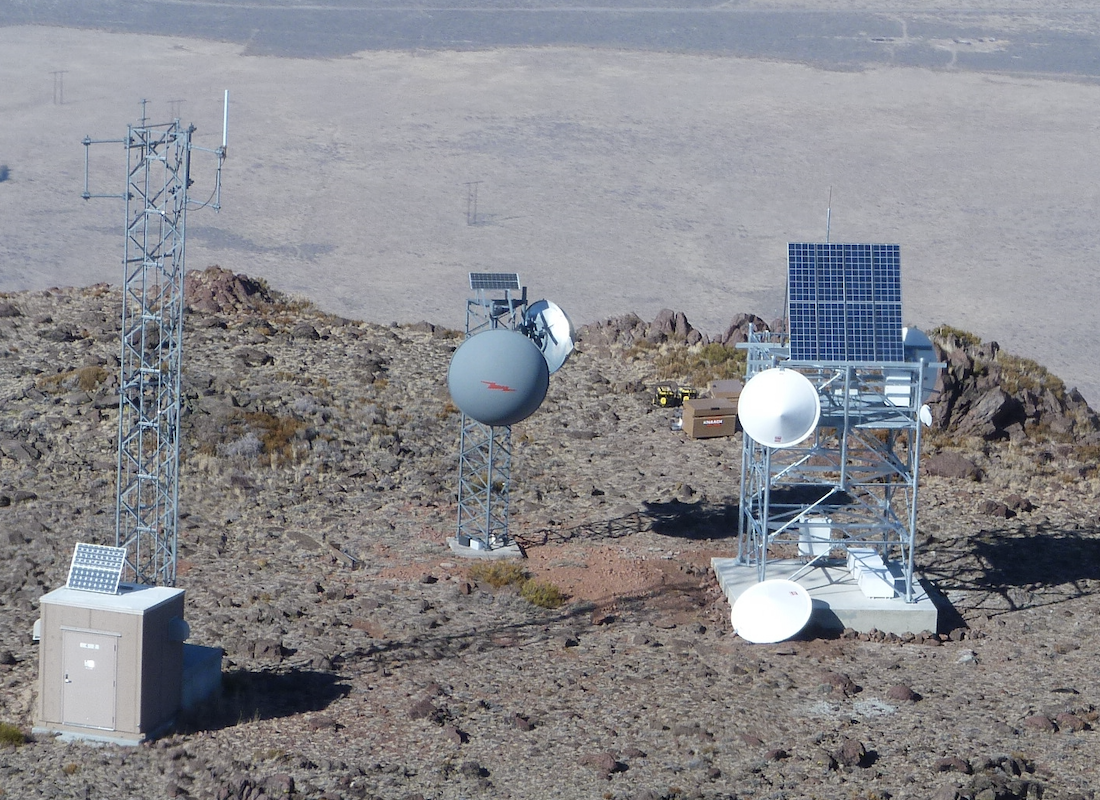
Let’s go boonie-whomp’n! Load up that trailer queen OHV, head out to the sticks and look for the tallest mountain to climb! Don’t forget to pack what you need for the trip… There are not any hardware stores or minimarts around. Sounds like a blast right!? That’s right we are hauling a tower and heavy equipment up that mountain and building a telecommunications site just south of Nowheresville! Nothing says fun like engineering, building, and commissioning a new site at an off-grid location. Wait a minute, how are we going to power this remote site without commercial power? Stick around and let’s find out.
Many factors can influence what type of power solution you install at an off-grid telecommunications site. Just like packing the right tool for the job, selecting the correct off grid power solution can mean the difference between a positive experience or negative experience… Hi-Hi! The common theme of any off-grid site is that the power needs to keep flowing regardless of location, environmental factors, or weather conditions.
So how does one build a reliable off-grid power system? The first step is to identify your load profile such as wattage, and supply voltage requirements. Once the power demand is identified the system autonomy needs to be looked at heavily. System autonomy is the amount of time the system will stay online without any power generation input. Power generation type, battery capacity, weather, budget, usable land area, and other factors can greatly affect autonomy. The load profile and desired autonomy are extremely important factors in designing an off-grid power system.
It is commonly assumed that photovoltaic solar arrays are the first and sometimes only option when they think of an off-grid power solution. However, there are many other power generation methods available that can be leveraged such as: motor generators, thermoelectric generators, fuel cells, wind power, geothermal, and more! In depth planning and calculations are needed to ensure you have the right solution for your application.
Once the power is generated where will it be stored? Batteries are the most common method of storing the valuable power your system will generate. There are an immense variety of options when it comes to battery manufactures, models, chemistry, and sizes. All batteries are not created equal and many of the same factors you consider when designing the power system and generation type apply to the batteries as well. A battery system that works well in one application may not be the right fit for another location. Without proper engineering and familiarity with battery chemistry an improperly designed battery system can under preform and even pose health and safety risks. Much care should be taken when designing your off-grid battery system by using a qualified professional.
With decades of experience designing power systems for rural and off-grid locations, Infiniti Wireless is up to the task of designing your next system. In addition to off-grid power solutions we can also offer green field prime power, backup power solution for remote sites, right sizing underperforming power systems, and grid-tie to existing power systems for cost savings. We offer turnkey power system solutions to get your project done right the first time. Our engineering team leverages the latest power generation solution the industry has to offer. Typically, one power generation type alone is not adequate for fully sustainable off-grid power on remote sites. To this end we use our expertise to design hybrid systems which combine different generating methods for maximum up time. Need drawings and site plans to submit building permits or intracompany purposes, no problem! We can also provide maintenance recommendations and training to ensure your system stays online for years to come. Our designers use a combination of cutting-edge modeling software, field surveys, and the copious amount of experience we have gained in the field to get your project done right the first time! Please contact us today to learn how we can assist with your next project.
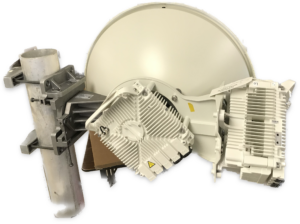 Greater bandwidth over longer distances with lower real estate cost may be a good start… Multiband radio systems have higher reliability due to adaptive modulation and frequency diversity improvement. All these factors combined can make multiband microwave radio systems a great addition to your network.
Greater bandwidth over longer distances with lower real estate cost may be a good start… Multiband radio systems have higher reliability due to adaptive modulation and frequency diversity improvement. All these factors combined can make multiband microwave radio systems a great addition to your network.
Greater bandwidth can be accomplished by combining multiple RF channels into a single data stream allowing for a seamless high-capacity handoff. Combining multiple frequency bands such as 80 GHz, 18 GHz, 11 GHz, and 23 GHz over a single antenna system can extend link distance as well as reliability. In addition to combining the RF channels, the radio also combines the capacity from each RF carrier into one common data stream output. The combination of these data streams into a common output is called Link Aggregation, or LAG for short.
Real estate cost for tower space is at an all-time high. Landlords are monetizing every square inch of their assets leaving lessees scrambling for ways to cut lease costs. Combining multiple RF channels over a single antenna can increase ROI by cutting lease fees substantially. With multiband microwave radio systems, you can benefit from two radios for the price of one along with higher link capacity.
Multiband radios receive benefit from frequency diversity as well as adaptive modulation. With these two technologies combined you receive a powerhouse of tremendous system gain as well as reliability improvement factors. Adaptive modulation enables the radio to deliver high-capacity speeds when the atmospheric conditions are optimal and “down-shift” to more reliable modes of modulation when conditions are unfavorable. This enables the link to stay up almost indefinitely while only suffering small periods of reduced capacity. Frequency diversity can improve a radio system’s reliability by shifting the radio loads between the two different carriers depending on which one is responding better to the atmospheric conditions. Multiband radio systems employing both adaptive modulation and frequency diversity yield greater capacity with improved reliability overall.
All together this is a very exciting time in the field of microwave radio communications. Having so many tools available to solve the hunger for higher capacity radio systems makes for successful system designs! Infiniti Wireless is currently designing multiband radio systems delivering up to 10 Gb full duplex capacity. Please contact us to learn more about how we can assist with improving your networks capacity and reliability.
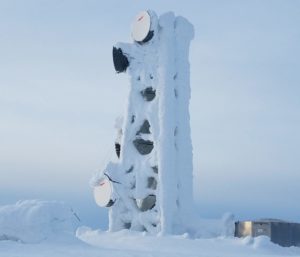
What is the difference between network redundancy and network diversity? Redundant routes ensure if a primary link fails the secondary takes over on the same network path. Network diversity ensures that if the redundant route fails there will be alternate path. Having both traits in your network ensures your mission critical infrastructure stays up and running in the face of avoidable and unavoidable network outage conditions.
Redundancy and Diversity come into play when you are looking at transmission mediums and equipment as well. Leaning on one transmission method too heavily can limit your options to bolster your network infrastructure. For example, too many fiber optic links traversing the same routes can lead single points of failure if the fibers all converge on one common cross connect.
Introducing properly designed microwave radio links can add both redundancy and diversity to any network. Running a microwave radio link in parallel to an existing fiber route will provide a redundant path in the event of a fiber outage. Additionally opening a new path in your network using microwave radio can deliver network diversity that fiber or lease circuits may not be able to deliver. Strategically placed microwave radio links can dramatically improve the redundancy and diversity of your infrastructure.
In conclusion, keeping an open mind to your network infrastructures redundancy and diversity will lead to a more reliable network. Infiniti Wireless has a team of network engineers that are well versed in designing redundant and diverse networks. Our engineering team will call on our expertise working with public safety, utilities, private enterprise, and wireless carriers to design a network for your specific needs. Please contact Infiniti Wireless today to discuss how we can assist you in creating a more robust network.
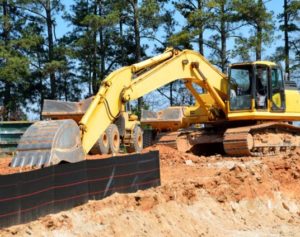 Have you ever had a redundant fiber or circuit fail all together? Could it be backhoe fading? What is backhoe fading?! This phenomenon occurs when a backhoe or another construction device digs up the conduit your communication lines are running through and breaks your connection. What’s worse is when your “redundant” circuit is in the same conduit as the primary which will cause a complete outage on your critical network link! The solution is adding microwave radio communication links which are impervious to backhoe fading! Infiniti Wireless has over 25 years in the microwave radio communications industry that we can use to help you make your network faster and more reliable using microwave radio. Contact us today for more information.
Have you ever had a redundant fiber or circuit fail all together? Could it be backhoe fading? What is backhoe fading?! This phenomenon occurs when a backhoe or another construction device digs up the conduit your communication lines are running through and breaks your connection. What’s worse is when your “redundant” circuit is in the same conduit as the primary which will cause a complete outage on your critical network link! The solution is adding microwave radio communication links which are impervious to backhoe fading! Infiniti Wireless has over 25 years in the microwave radio communications industry that we can use to help you make your network faster and more reliable using microwave radio. Contact us today for more information.
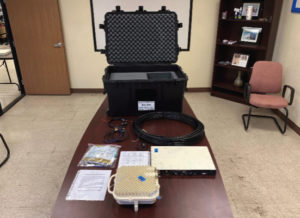 Disasters never send a meeting invitation. That is why having an emergency communication backup plan for your critical infrastructure is important. Rapidly deployable microwave radio kits are a great way to gain this advantage. Infiniti Wireless has been configuring, staging, and deploying emergency microwave links for critical infrastructure during the last 5 years.
Disasters never send a meeting invitation. That is why having an emergency communication backup plan for your critical infrastructure is important. Rapidly deployable microwave radio kits are a great way to gain this advantage. Infiniti Wireless has been configuring, staging, and deploying emergency microwave links for critical infrastructure during the last 5 years. 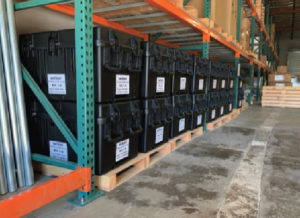 Our emergency licensing team is standing by to file STA licenses during disaster situations to get licenses granted in as soon as 24 hours. Flexible options for budget, equipment manufacture, antennas sizes, and licensing available. Call us today to discuss what the best fit for your network is.
Our emergency licensing team is standing by to file STA licenses during disaster situations to get licenses granted in as soon as 24 hours. Flexible options for budget, equipment manufacture, antennas sizes, and licensing available. Call us today to discuss what the best fit for your network is.
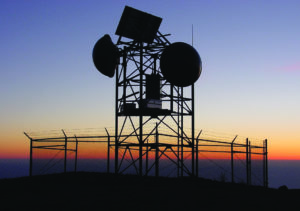 Microwave RF Repeaters – no power lines, no shelters, no roads
Microwave RF Repeaters – no power lines, no shelters, no roadsPeninsula Engineering’s microwave RF repeaters are active through signal repeaters designed for remote locations. These repeaters draw 35 to 50 Watts of DC power per duplex channel pair. Site power can be photovoltaic solar electric generation and storage batteries. The repeater equipment is designed to be simple and highly reliable. Each signal channel has only one active element, a highly linear amplifier with internal redundancies. Amplifiers can draw DC power from redundant sources further enhancing system reliability.
Microwave RF Repeaters are ideal for remote, unattended locations. Their low power consumption and high reliability permit use where access is difficult. Weather resistant construction eliminates the need for a shelter in most applications.
Now, that mountain top, perfect for relaying signals between two sites, can be used as an active repeater station!
Active microwave RF repeaters can be used where other remote repeater site solutions don’t cut it. Active repeaters add gain to the signals and thus require much smaller antennas than passive repeaters using back-to-back antennas. Active repeaters are easier to site and construct than passive reflector or “billboard” repeaters. Passive reflectors develop very narrow beamwidth signal patterns that can lead to fading due to refractivity in the atmosphere. Active repeaters using parabolic antennas minimize this cause of fading.
Peninsula Engineering’s microwave RF repeaters are available in configurations to support low to high capacity links, multicarrier, single and dual polarization, adaptive modulation, automatic transmit power control, and XPIC. RF repeaters can be used in tandem applications typically up to five hops with proper design considerations.
Difficult, challenging, tough applications are where these versatile repeaters thrive! Challenge us!
Peninsula Engineering Solutions, Inc. and Infiniti Wireless, Inc. are pleased to announce the merger of their two companies.
Peninsula Engineering Solutions, Inc. is the world’s leading manufacturer and seller of Microwave RF Repeaters. Since 1983, Peninsula Engineering has taken pride in providing highly reliable, cost effective solutions that require very low power to operate. Each Microwave RF Repeater is housed in a weather tight cabinet that can withstand temperatures from -40°C to +60°C. Microwave RF Repeaters are installed all over the world in over 30 countries. Peninsula Engineering also provides robust remote site and off-grid power solutions focused on telecommunications needs.
Infiniti Wireless, Inc. is a Sales, Service, Engineering, and Installation company, specializing in Microwave Communications. Since 1997, Infiniti Wireless, Inc. has specialized in the resale, design, installation and support of high performance digital transmission & IP network systems. Infiniti Wireless, Inc. provides services for private, commercial and government applications.
Peninsula Engineering Solutions, Inc. will continue to operate as it always has with the highest quality and customer service that our customer’s have come to expect.

Please contact us for you next RF repeater or alternative power need.
No matter the age Infiniti Wireless has your network covered
Regardless of the age of the Alcatel MDR-8000 system, Infiniti Wireless will continue to support this system at a high level. We pride ourselves on being able to offer support of a given system and continue to do so as long as our customers need the support. Much like any repair offered by Infiniti Wireless, our Alcatel MDR-8000 repair services comes with:
Infinitiwireless® is a microwave telecommunications EF & I (engineering, furnish & install) company based in Sacramento, California. We specialize in the resale, design, install and support of microwave radio systems. For past 20 years we have offered exceptional support to private entities, commercial companies and government organizations. Read our full story to learn more about Infinitiwireless.
Want to stay informed and up to date with the latest in the telecom industery?